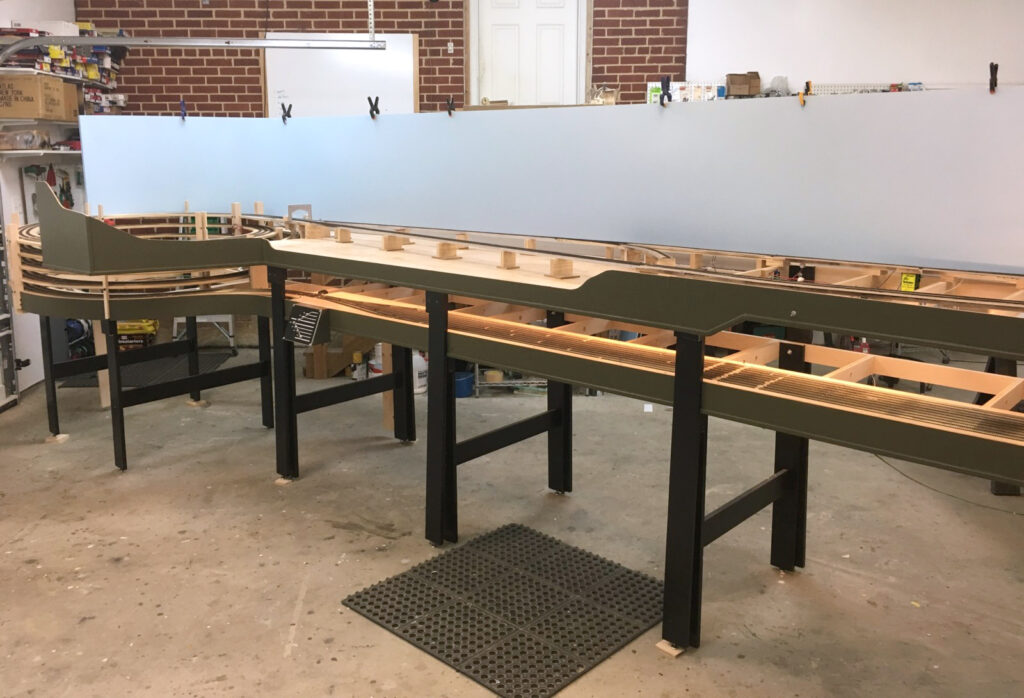
Well over half of the individuals who contact me state that they want a multi-deck layout. The idea of doubling the size of the potential railroad seems like a silver bullet. The decision as to design configuration is neither good nor bad IF you know exactly what the pros and concerns are. That’s my concern. I really don’t think most people are going into this with their eyes wide open. By not doing so they leave themselves open to spending many thousands of dollars on what amounts to an unworkable dumpster fire. I spent today writing a dig deep discussion on the subject which you can read HERE. Be forewarned that this is not light light reading. It’s not entertaining reading. But, if you’re seriously contemplating spending what would likely be a decision costing well over 10k, it’s worth going through. Multi-deck layouts have their place. They are the right fit in some circumstances IF you know what you’re getting into.
Lance,
An alternative to a full double deck layout : one full level and a branch line that could
be quite long. That proved to be a good solution on the ClinchValleyLines. That branch—which was the CVL— served two smaller
industries, the primary yard (Andover, VA) one medium sized and one big coal mine. The branch left the “overhead” main about midway between two staging yards and stretched most of of the overhead.
Roger Sekera
Good point. Thanks Roger.
I visited a local (Seattle) narrow gauge layout this week and talked to the owner about the positive visual impact of his not going double deck. The layout, in a room 15×25, rose in elevation from one end around the room and back onto a peninsula gaining about 18″ along the 60 +/- feet of mainline but no benchwork was above any other. It was stunning. The owner said it’s tempting to want more but was proud of the fact that he’d kept it simpler, kept the station trackage to logical minimums and didn’t fill the space with buildings. And as he ages into his 70s, it’s not going to be a nuisance that becomes a dust-covered mess. By keeping it one level, he reduced his maintenance and cost headaches while still giving him 20 years (and counting) of modeling this concept. The simple track configurations at each station were just enough and logical for the operations. I believe satisfying group operations run a busy couple of hours but any part of the layout could be operated as a one man standalone session for an hour or less. It was a statement of how well your ideas of simplicity equally satisfaction when played right. Keep pushing them!
Well said!
Hi Lance,
What are your thoughts about a lower deck for staging? Obviously helix concerns remain the same. But if you have no buried track (i.e. neat, open fascia windows to check on things) and rerailers every section of straight yard track, might this create more operating potential?
I like building and switching industries, but ever since I was a kid my idea of railroading is watching (feeling) a long freight approach, pass by, and fade away into the horizon. I’d like to recreate this experience on my model railroad, and I’m considering a lower staging deck on my next (second) N-scale layout.
Also, your new structure book is great! Almost finished with my first scratchbuilt building…and having a blast.
Thanks,
Josh
Thanks for the kind words Josh. Although, there will always be exceptions, I generally don’t recommend multi-deck designs. It’s a case of sounding good on paper and being pretty unpleasant in practice. Here’s more information on the subject: https://www.shelflayouts.com/post/multi-deck-format-deep-dive
Thanks, Lance. I figured as much. Guess I’d better start greasing some wheels with the powers that be for an annex…lol.